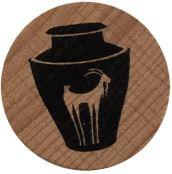The Durrani Empire had just collapsed and large swathes of Central Asia had fallen into disarray. It was an ideal opportunity for the ferengi to impose their power over the region and fight out their rivalries somewhere far away from their daily politics. The foreigners were completely unaware of how the local Afghan leaders were manipulating them to their own benefit. They played their own "Great Game" with these superpowers and knew that the imperial might would not survive for long. There was never going to be a Pax Pamir: Second Edition by Cole Wehrle from Wehrlegig Games.
Pax Pamir's Two Histories
Pax Pamir: Second Edition is a game of two histories: the history of the region and the history of the game itself.
The game is set in the 19th century in Central Asia, a period that Western historians call "the Great Game" when "Afghan leader[s] [attempt] to forge a new state after the collapse of the Durrani Empire," as the rulebook says. Of course, there is nothing "great" about "the Great Game". It's the usual story of imperial powers, Britain and Russia in this case, forcefully imposing their control on an unstable region. Battles were fought, new rulers were installed and negotiations were had. Ultimately though, the local population suffered immensely at the hands of two military and political superpowers.
The other history is that of the game itself. As the name suggests, Pax Pamir: Second Edition is the successor to Pax Pamir. The original game was also designed by Cole Wehrle, but in tandem with Phil Eklund.
Eklund is well-known for putting his own spin on history and science, to put it diplomatically. He's previously said that "every word [...] is a fact within the limits of [his] knowledge1", which means arguing with him is futile. There's a whole section at the end of the Pax Pamir rulebook titled "A Defense of British Colonialism2" in Eklund's name.
Wehrle, on the other hand, seems to have a different stance. He writes at the end of the same rulebook that "Eldred Pottinger [...] is made out to be the 'Hero of Herat' by a Victorian novel [but] the siege of Herat was likely not turned by a single inventive Westerner, and Afghan histories rarely take note of Pottinger’s involvement2".
I think that shows what Wehrle tried to achieve with the game and where Eklund tried to push it.
A Defense of Cole Wehrle
As far as I know, Wehrle never agreed with Eklund's "designer notes" in the rulebook. There are also indications that Wehrle had been given permission to include his own notes in the rulebook. These notes clarified the horrible historic background that Pax Pamir is set against. Ultimately though, these notes were never included in the original game.
Wehrle spent several years researching "the Great Game". It's clearly a real passion project for Wehrle. He tried to create a game that conveys the struggles Afghan leaders faced at the hands of the imperial powers. So when Wehrle got the opportunity to take Pax Pamir and re-design it, it became the game he had intended from the start. Pax Pamir: Second Edition is based on Pax Pamir, there is no getting around it, but Eklund's influence has been completely removed and the later game is a much more refined experience overall.
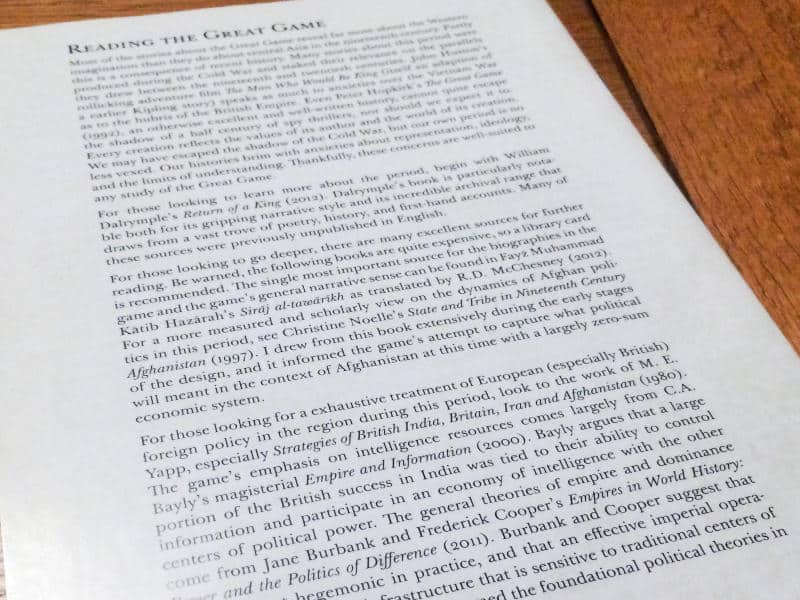
The rulebook for Pax Pamir: Second Edition has a whole page right at the end that explains how best to read "the Great Game" and references other sources that you should read alongside. If you follow Wehrle's advice here, you get a much better sense of what went on during this time in history.
More interesting, to me at least, is the section at the end of the rulebook titled "Design History and Dedication". It describes how Pax Pamir came about and how it lead to Pax Pamir: Second Edition. While Wehrle thanks Eklund for his mentorship, he also mentions Patrick Leder3, with whom he has since had a fruitful relationship under the Leder Games brand.
The Game
The final product is quite different from a lot of war games, or rather CONSIMs, or conflict simulations. While this board game genre is known for basic components and often dull illustrations, Pax Pamir: Second Edition is really luxurious and almost colourful. There are resin blocks that represent armies or roads of the so-called coalition powers, Russia, Britain and Afghanistan. They feel heavy in your hand and have a lovely design embossed on them. They are a real visual statement on the cloth game board.
Yes, the game board is a cloth with the map and score track printed on it. It also has some lovely flourishes. There are faint outlines of mountains and the score track is beautifully decorated, inspired by Persian and Indian patterns and designs. You can also use the reverse of the market board as a game board, if you prefer a more sturdy playing surface.
There are loyalty dials, which you spin around to indicate which coalition you are currently allied to. These and all the other cardboard components, such as the cardboard money, are really thick and feel durable. They should last a very long time indeed.
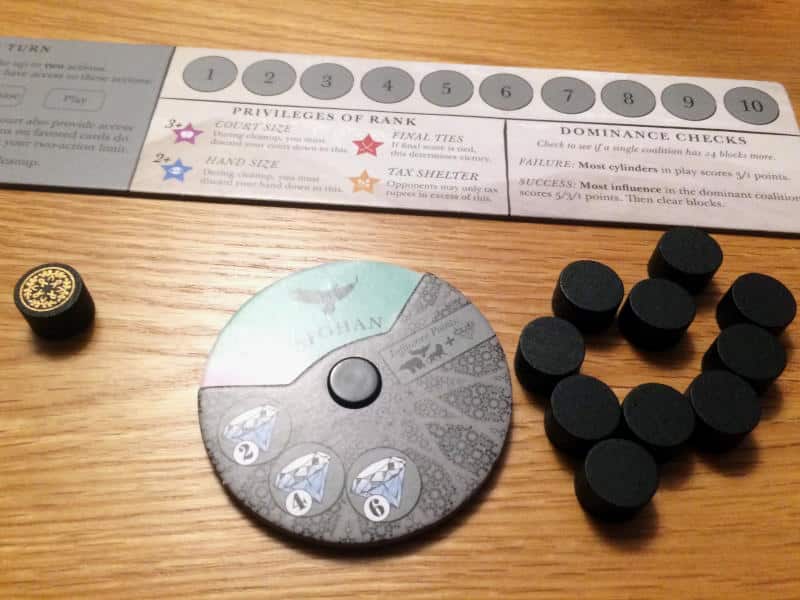
Every player also gets a set of ten wooden discs in their player colour, plus a score tracker disc that has a lovely little design screen printed on it.
Overall, the game does feel very luxurious and the components are a real joy to play with.
"In terms of gameplay, Pax Pamir is a pretty straightforward tableau builder." That's how the rulebook describes the game. Even though that's correct in basic terms, it couldn't be further from the truth. In this review, I can only scratch the surface of this very deep game. There are so many subtle effects that you will only discover if you play the game several times.
So, yes, at its core Pax Pamir: Second Edition is a tableau builder. The whole game is based on the actions and effects displayed on the over 140 cards. When you play a card, you're affecting the game state, adding tribes, spies, armies or roads to the game. Once in play, you use a card's actions to further affect the game, taking taxes, betraying enemies, moving spies or armies, adding more armies or roads to the map or fighting battles. That's, in principle, all there is to the game. Simple enough.
Of course, that's just the mechanisms in the game. The actual game is all about the various ways of scoring. It's about timing your actions in such a way that you're in the right position when scoring does take place or even forcing a scoring round. Timing is very important in Pax Pamir: Second Edition, but at the same time, you can never plan very far ahead.
Constant Flux
The game is in constant flux. You rely on tactics more than strategy, even though you need to plan a couple of turns ahead. It's really weird and very different from other tableau builders. Your tableau is only ever useful for a few rounds. You always have to be prepared to rip it up and change it at a moment's notice.
The cards in your hand are almost more important than those that are active and laid out in front of you. After all, Pax Pamir: Second Edition tries to emulate a time where Afghan leaders quickly pounced on the few opportunities that presented themselves. Similarly, as a player, you need to create opportunities for yourself. Collect a good hand of cards that you can play into your tableau when the moment is right. Don't get too attached to your court of active cards. Be ruthless and chop and change when necessary.
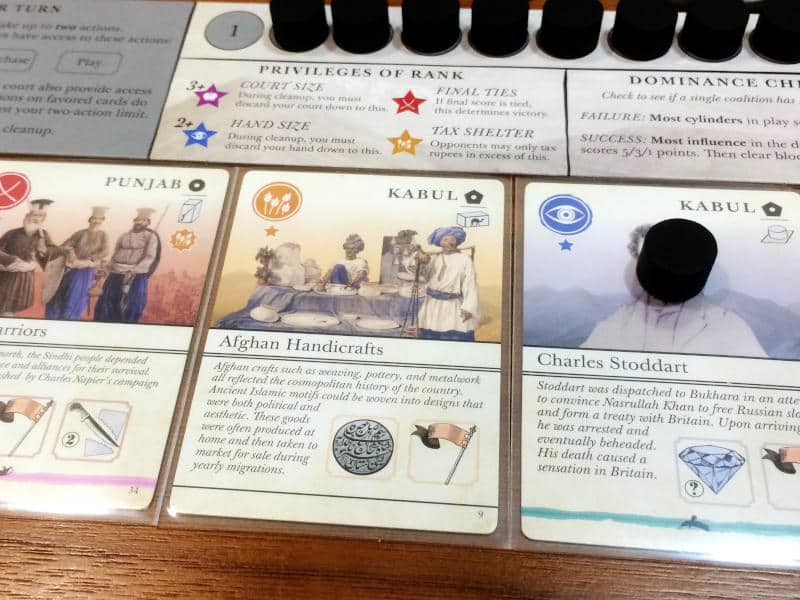
In the same way, your loyalty is almost irrelevant. You need to be able to switch your allegiance to another power if they are in the lead. There is no point in blindly following the same faction and spending huge amounts of actions on getting them into the lead. It's much easier and more sensible to change your loyalty to whoever is in the lead. Don't feel bad about the roads and armies you have placed on the map for Russia. Leave them in the dust of the desert and swear your allegiance to the British or the Afghan instead, if they're in the better position.
It feels so very unnatural to play what looks like a classic tableau builder and could even be confused with an engine builder in this way.
Opportunities
Ultimately, Pax Pamir: Second Edition is all about scoring. You can win immediately if you have the most points and are at least four points ahead of the next highest player after a scoring round. There are up to four scoring rounds and it is possible to score five points in a single round. So the game can potentially end after the first scoring round - and I've seen this happen. Again, it's all about timing.
You will see when a scoring round approaches, but you can also force an immediate scoring round if you have enough money. Similarly, scoring rounds can happen unexpectedly. So you always have to check how many points everyone would score if a scoring round happened now and decide if you're safe to play another turn or if you have to do something about it right now.
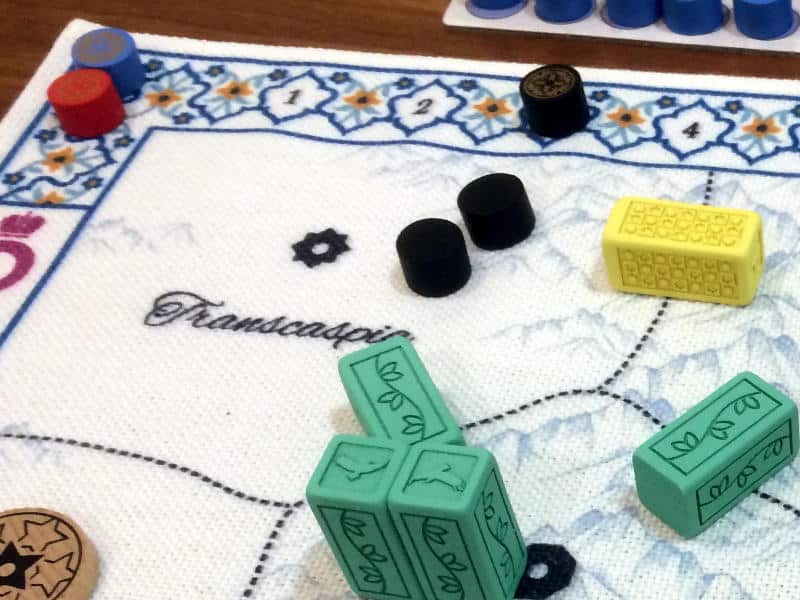
In fact, when it comes to winning, or rather stopping someone from winning, Pax Pamir: Second Edition feels very much like Oath. There comes a time in the game when players have to either work together or at least try and negotiate who is best placed to stop the winner. The problem is, like in Oath, that by stopping another player's win, you're probably also putting yourself in a worse position. It's a tough choice.
The game is fully aware of this and the rulebook strongly encourages players to "discuss the game during play and explicitly coordinate their actions". I say "strongly encourages", which is probably a bit strong, but it's in the rulebook and is definitely something you need to do during the game. Pax Pamir: Second Edition is certainly not a multiplayer solitaire game.
The Setting
As I mentioned already, Pax Pamir: Second Edition, like most war games, is unable to convey the suffering and horror that many people faced during the time that the game is set. You are encouraged to read the card text as you play, which gives you a glimpse of what went on and who these people are. The rulebook points you to "the Great Game" and further reading, which gives you a more thorough understanding of the time period and what happened.
However, in reality, when you play, you are much more focussed on trying to influence things in your favour. You don't worry if the card you just played represents a person who fought in battles against the Afghans. You also don't care if the person on the card is actually fictional. When you betray a card in another player's court, you don't think of it as killing the enemy of Afghanistan, Britain or Russia. Instead, you just want it as a prize to add to your influence on that power.
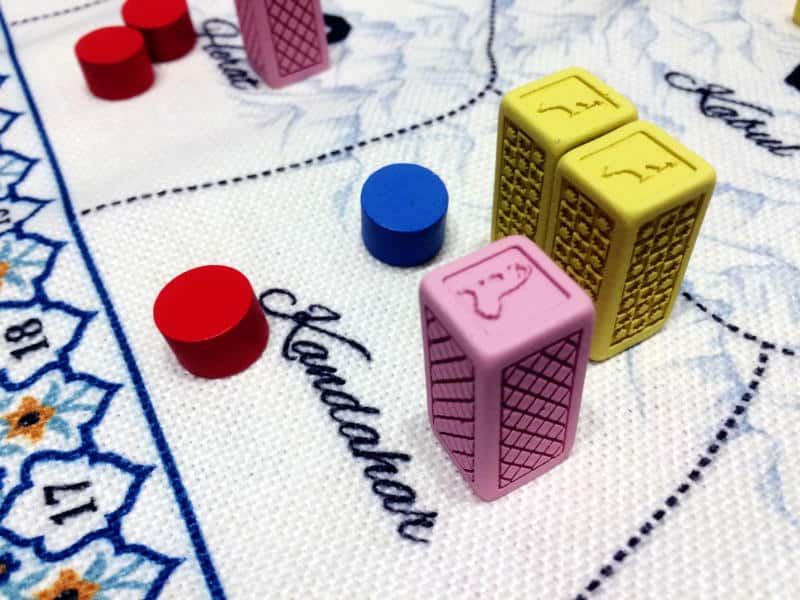
At the same time, Pax Pamir: Second Edition never set out to portray the horrors that take place when an imperial power invades another country. Its aim was to put players into the position of an "Afghan leader [who tries to] forge a new [stable] state [while trying] to manipulate the [...] foreigners for their own purposes" - and the game really succeeds at that.
Player Experience
However, it does take a little while to get to that point. I can't deny that the game takes a while to properly understand. The rules are simple enough, but because it's such a deep game, learning what impact different actions have and how best to time them takes a few plays. Personally, until my third game, I felt I had hardly any agency. However, then it really clicked and I was actively making decisions to manoeuvre myself into a winning position.
So, be prepared to invest your time into Pax Pamir: Second Edition. You have to stick with it to really appreciate it. Only then will you see how glorious the game is. You constantly duck and dive and chop and change. The game happens on the table as well as among players. Not only do you need to change your loyalty to the coalitions within the game, you also need to do the same with the other players around the table. Pacts will only ever be useful for a certain number of rounds. You need to constantly re-assess which of the people around the table you want to work with, all the while making sure you get the most benefits from any agreements you forge with them.
Pax Pamir: Second Edition isn't just a passion project for the designer, but it feels like a passion project for me, as a player. Allow it the time it needs to bloom and you will experience an amazingly exciting and engrossing game that will keep you entertained and continue to teach you new things for a very long time to come. I've merely scratched the surface of this game so far...
Sources
- Phil Eklund quote "every word [...] is a fact within the limits of [his] knowledge": https://media.discordapp.net/attachments/265301273262292993/801006296496341052/phil_eklund_statment_1_18_2021.png?width=735&height=507
- Pax Pamir rulebook: https://boardgamegeek.com/filepage/115717/pax-pamir-rules
- Pax Pamir: Second Edition rulebook: https://www.dropbox.com/sh/9y424wt1p3m4dnx/AAACyq1g0eBXLgDfGjQrRDHEa?dl=0&preview=PaxPamir+Rules.pdf
 Games
Games How to resolve AdBlock issue?
How to resolve AdBlock issue? 

















